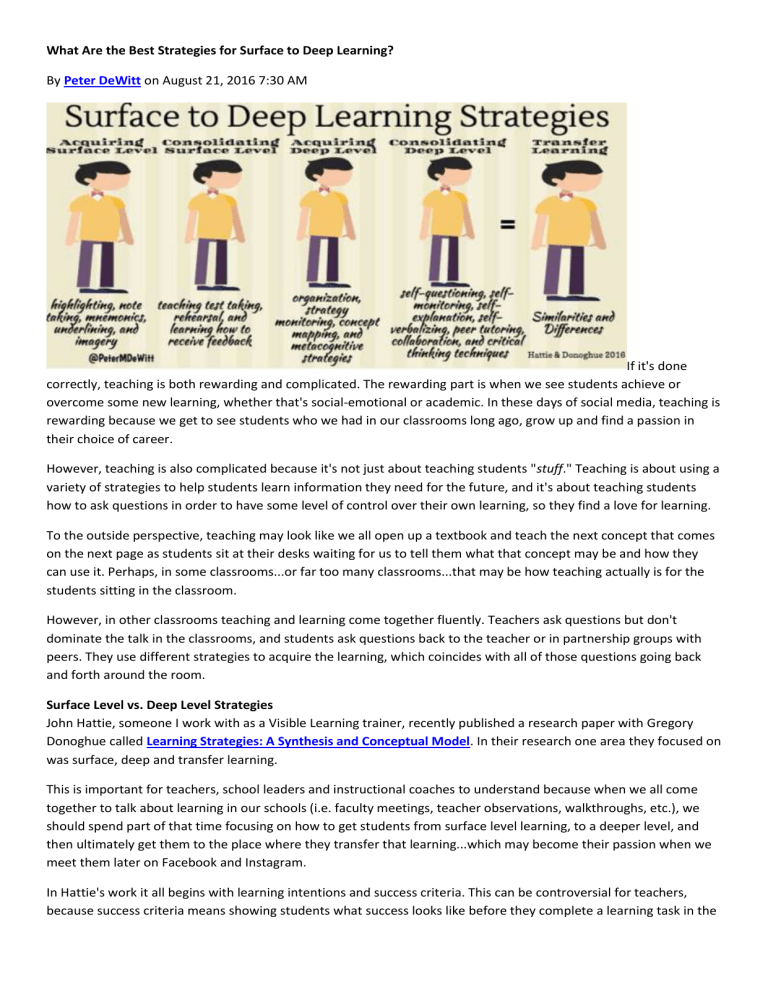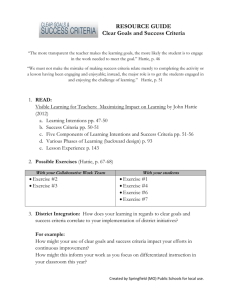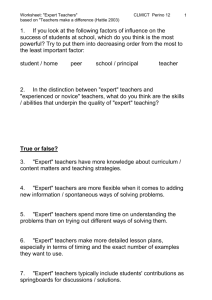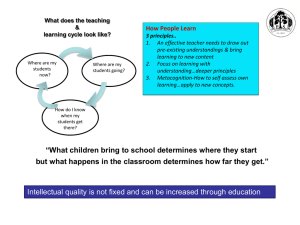
What Are the Best Strategies for Surface to Deep Learning? By Peter DeWitt on August 21, 2016 7:30 AM If it's done correctly, teaching is both rewarding and complicated. The rewarding part is when we see students achieve or overcome some new learning, whether that's social-emotional or academic. In these days of social media, teaching is rewarding because we get to see students who we had in our classrooms long ago, grow up and find a passion in their choice of career. However, teaching is also complicated because it's not just about teaching students "stuff." Teaching is about using a variety of strategies to help students learn information they need for the future, and it's about teaching students how to ask questions in order to have some level of control over their own learning, so they find a love for learning. To the outside perspective, teaching may look like we all open up a textbook and teach the next concept that comes on the next page as students sit at their desks waiting for us to tell them what that concept may be and how they can use it. Perhaps, in some classrooms...or far too many classrooms...that may be how teaching actually is for the students sitting in the classroom. However, in other classrooms teaching and learning come together fluently. Teachers ask questions but don't dominate the talk in the classrooms, and students ask questions back to the teacher or in partnership groups with peers. They use different strategies to acquire the learning, which coincides with all of those questions going back and forth around the room. Surface Level vs. Deep Level Strategies John Hattie, someone I work with as a Visible Learning trainer, recently published a research paper with Gregory Donoghue called Learning Strategies: A Synthesis and Conceptual Model. In their research one area they focused on was surface, deep and transfer learning. This is important for teachers, school leaders and instructional coaches to understand because when we all come together to talk about learning in our schools (i.e. faculty meetings, teacher observations, walkthroughs, etc.), we should spend part of that time focusing on how to get students from surface level learning, to a deeper level, and then ultimately get them to the place where they transfer that learning...which may become their passion when we meet them later on Facebook and Instagram. In Hattie's work it all begins with learning intentions and success criteria. This can be controversial for teachers, because success criteria means showing students what success looks like before they complete a learning task in the classroom. This should not be so controversial. Imagine sending a child into a soccer game without ever having watch a soccer match on television or in real life. We would never do that. In the paper, Hattie and Donoghue write, "Knowing the success criteria. A prediction from the model of learning is that when students learn how to gain an overall picture of what is to be learnt, have an understanding of the success criteria for the lessons to come and are somewhat clear at the outset about what it means to master the lessons, then their subsequent learning is maximized. The overall effect across the 31 meta-analyses is 0.54, with the greatest effects relating to providing students with success criteria, planning and prediction, having intentions to implement goals, setting standards for self-judgements and the difficulty of goals." When students know the learning intentions and success criteria, they can go from surface level to deep, and even transfer learning better than they could if they never had it before. After teachers use learning intentions and success criteria, they can move on to different strategies that will lead to each level of learning. Hattie and Donoghue focus on acquiring and consolidating the different levels of learning. When teachers work with students on acquiring surface level learning, they are teaching students to use strategies like highlighting, note taking, mnemonics, underlining, and imagery. When students go to the next level of consolidating surface level learning, they are using strategies like test taking, rehearsal, and learning how to receive feedback. Hattie and Donoghue go on to focus on acquiring deep level, and suggest strategies such asorganization, strategy monitoring, concept mapping, and metacognitive strategies. The next step is to consolidate that deep learning by using strategies like self-questioning, self-monitoring, self-explanation, self-verbalizing, peer tutoring, collaboration, and critical thinking techniques. Teaching students these strategies, and how to use them, will all help lead to transfer learning, which is the ultimate goal for us as teachers. This, of course, takes us back to the success criteria we used to start all of this in the first place. Hattie and Donoghue write, If the success criteria is the retention of accurate detail (surface learning) then lower-level learning strategies will be more effective than higher-level strategies. However, if the intention is to help students understand context (deeper learning) with a view to applying it in a new context (transfer), then higher level strategies are also needed. In the End Why does all of this matter? In Hattie's research he found that project-based learning (PBL), something many teachers like to use, has an average effect size of around .15 which is well below the .40 which represents a year's worth of growth for a year's input. One of the reasons for the low effect size is that we often throw students into PBL without providing them with surface level learning first...nor do we provide the strategies needed when they come to a point that is very challenging. Talking about surface level, deep level and transfer learning, as well as the strategies to use at each point and the questions to ask, will help strengthen the learning that happens in the classroom, and can ultimately lead to a higher level of student engagement. Imagine having the time in our PLC's or faculty meetings to explore topics like questioning and learning strategies, instead of spending our time solely on pacing, testing or random adult issues where they complain about a lack of student engagement instead of focusing on the questions we ask which may actually increase student engagement. Peter DeWitt, Ed.D. is the author of several books including Collaborative Leadership: 6 Influences That Matter Most (September, 2016. Corwin Press). Connect with Peter on Twitter. Re: the low effect size of PBL. PBL and or design technology is very effectively used in learner-centered schools where learners are perceived and respected as individuals from their earliest years in school. They are largely responsible for their own learning, with mentoring, facilitation, and scaffolding by adults. In the process of asking and answering their own questions, they develop the deeper, higher level thinking skills that are built in to the project/activity/quest/challenge. Many so-called PBL activities in public schools are teacher-designed add-ons that are more like a recipe or blueprint, rather than authentic learner-designed projects based on each learner's questions. Our current definition of "success" (high test scores) totally ignores the strengths, types of intelligence, learning strategies, and interests of individual students. (See Todd Bell's book The End of Average for more on this.) Hattie and Donoghue recommend processes such as self-questioning, self-monitoring, self-explanation, and self-verbalization--which only happen when control of learning is returned to the learners.


